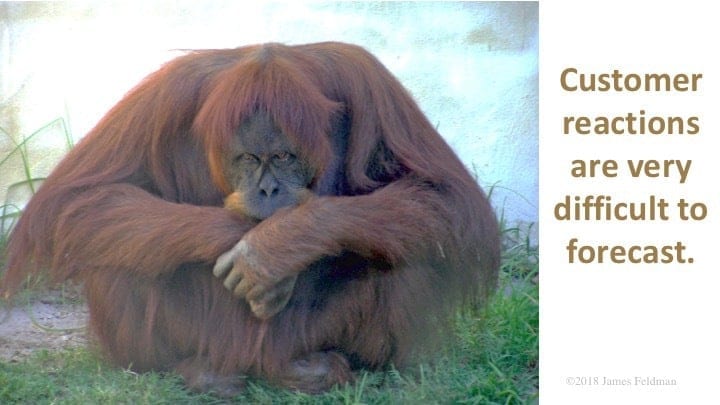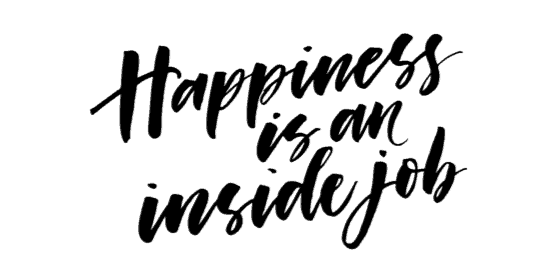The Secret to Your Happiness – It’s Within You
The Secret to a Happy Life ~ Native American parable
One day the Creator gathered all the animals and said:
‘I want to hide the secret to a happy life from humans until they are ready for it.’
‘Give it to me. I’ll fly it to the moon,’ said the Eagle.
‘No, one day soon they will go there and find it.’
‘How about the bottom of the ocean?’ asked the Salmon.
‘No, they will find it there too.’
‘I will bury it in the great plains,’ said the Buffalo.
‘They will soon dig and find it there.’
‘Put it inside them,’ said the wise grandmother Mole.
‘Yes,’ said the Creator, ‘it is the last place they will look.’
If you check out the self-help section of Amazon or any book store, you’ll find hundreds if not thousands of titles aimed at increasing our happiness by losing weight, getting a better job, finding the ideal mate, taking the perfect vacation, eating the latest trendy food, or making more money.
But the latest research on happiness suggests there are as many definitions or experiences of joy as there are people. Finding our brand of personal happiness is a bit like appreciating art – it’s subjective, but we know it when we see it.
Though happiness is unique to each of us, one commonality from this research is that people have control over their happiness (or unhappiness). We can measure it, control it, and learn to cultivate it. In other words, we can proactively train ourselves to feel happy.
Although happiness can be a tricky concept, it is becoming increasingly possible to crack the code, both in the bigger picture and in hands-on ways that make a difference in your daily life.
The Meta of Happiness
What is happiness? Is it a state of mind? A philosophy? Is it an emotion that we can manage, like anger and sadness?
“Happiness is the meaning and the purpose of life, the whole aim, and end of human existence.” ~ Aristotle.
Aristotle helped us understand happiness in two distinct parts:
Hedonia: the feeling of pleasure, enjoyment, and satisfaction and the absence of stress and distress.
Eudaimonia: a good life based on authenticity, personal growth, while contributing to a purpose larger than oneself.
It turns out Aristotle’s two-thousand-year-old wisdom still applies today. University of Pennsylvania psychology professor, Dr. Martin Seligman has identified three dimensions of a happy life that correlate well with Aristotle’s ideas:
The Pleasant Life (pleasure-seeking). Looking for opportunities to maximize feelings of pleasure while minimizing feelings of pain.
The Good Life (engagement). Seeking happiness by using our signature strengths to fulfill our desires by pursuing our passions.
The Meaningful Life (wellbeing). Finding happiness using one’s strengths, abilities, and passions in the pursuit of and service towards a greater good.
While happiness is individual, it is also universal. Happiness has become recognized by the United Nations as a critical measure of social progress in the world. The World Happiness Report, which ranks 155 countries by their happiness levels, found that, while the Nordic countries topped the list, the USA plummeted from 3rd place in 2006 to 19th in 2016.
Globally, we are more productive than ever before, have greater access to advanced medicine, technology, information, healthy food, and live in a time of unprecedented freedom and opportunities. So why are so many of us still so unhappy?
It seems we stick with jobs we dislike, relationships that are unhealthy, are cynical about our institutions, and burden ourselves with attaining and maintaining ‘stuff.’ We’re overextended, underappreciated, have fewer social supports, and feel more uncertain than we have in over a decade. And what’s the typical response to this malaise? We put our heads down, roll up our sleeves, and work harder. That’s a recipe for keeping our happiness at bay.
The good news is we can learn ways to respond to our situations in ways that create and promote our happiness. That’s where Positive Psychology comes into play.
Positive Psychology suggests each of us is born with a ‘set-point’ for happiness. Some of us are naturally wired to be happier than others. While our set points remain relatively constant, evidence suggests they increase or decrease depending upon our interpretation and responses to events. This means that, though our DNA, genes, and personality traits impact how happy we are, we ultimately have some control over our happiness. But there’s a catch.
Merely wanting to experience more happiness won’t make it so. The happiest people are the ones who take charge of their attitudes, thoughts, feelings, and behaviors. The bottom line is, happy people are highly intentional.
Knowing that the power to create our happiness resides within each of us is, well, empowering. But before creating new happiness habits, it’s critical first to eliminate habits that interfere with joy.
“By letting it go, it all gets done. The world is won by those who let it go. But when you try and try, the world is beyond winning.” ~ Lao Tzu
Many habits interfere with our ability to feel happy. The first step to experiencing more happiness is letting these things go:
The idea that life is hard.
If happiness is a choice, so is our belief that life is hard. Life is exactly as hard (or as easy) as we decide. This isn’t about minimizing obstacles or challenging circumstances. It’s about choosing the mantra life is easy.
It is being distrustful.
We live in a cynical world, and it can be hard to trust people. But distrusting others impedes our ability to be intimate and form the relationships central to happiness.
We are comparing ourselves to others.
When we look at others to determine our worth we’re biased – we take the worst we believe is true of ourselves and compare it to the best we imagine in someone else.
You are trying to control life.
Things seem to go more smoothly, with much less stress, when we allow a situation to unfold naturally instead of trying to force a result.
Mind-wandering.
We all daydream from time to time. But a recent Harvard study suggests that mind-wandering plays a significant role in our unhappiness. Happiness is closer at hand when our minds focus on what we’re doing in the present moment.
By letting go of the habits that prevent our happiness, we simplify our lives. This makes room for new happiness habits to take hold.
How clear is your slate of these obstacles to happiness?
Cultivating Happiness in Your Brain
Once you’ve let go of the habits that interfere with happiness, it’s time to form the new ones that improve joy in your life.
We can maximize our results by understanding what happens in our brains when we’re happy or unhappy. What brings us the chemical high of being happy?
The limbic system is the part of the brain that controls our motivation, behavior, and emotions. It’s a survival mechanism that produces chemicals that let our bodies know what’s right (and bad) for us.
How do you boost your ‘feel-good’ brain chemicals? By tapping into these four main chemicals: dopamine, oxytocin, serotonin, and endorphins (DOSE).
While daily events and situations trigger these neurotransmitters automatically, there are ways to encourage the brain to produce them – allowing us to create (and repeat) feelings of happiness. When those chemicals are released, we become more motivated, productive, and experience greater wellbeing.
Dopamine is often referred to as the ‘happiness drug.’ It’s responsible for motivating us to take action, make decisions, and feel pleasure when we reach our goals. Dopamine is the brain’s way of patting us on the back for a job well done when we score a goal, get an ‘A,’ or cross the finish line, for example — experiencing procrastination, self-doubt, or lethargy? Low dopamine levels could be to blame. Time to manufacture a few wins for ‘team you.’
Ways to increase your dopamine levels:
• Creating mini finish lines to cross instead of just a final, big one when a goal is achieved helps us feel good over a more extended period.
• Initiating acts of kindness towards others gives the brain a hit of dopamine.
• Quit smoking. A recent study showed smokers had 15-20% lower capacity for producing dopamine than non-smokers – but it’s reversible if you stop smoking.
Oxytocin. Oxytocin is affectionately referred to as the ‘cuddle hormone.’ It’s released through social interactions like giving (or receiving) a gift, making eye contact, giving or receiving affection (like a handshake, hug, or pat on the shoulder), giving birth or having intercourse.
Ways to increase your oxytocin levels:
• Make eye contact during your conversations.
• Get a massage.
• Hug a friend, pet your pet, or share a more intimate moment with a loved one.
• Meditation and prayer.
Serotonin. Are you in a good mood? You can thank serotonin. Serotonin is the brain’s antidepressant drug of choice. It surges when you feel like your life and your efforts matter — feeling ‘hangry’ (hungry and angry)? Since 80% of serotonin exists in the stomach, skipping meals reduces serotonin, which can lead to grumpiness.
Ways to increase your serotonin levels:
• Express gratitude.
• Increase your exposure to sunlight. This produces Vitamin D, which, in turn, triggers serotonin.
• Think happy thoughts. Serotonin doesn’t distinguish between reality and imagination, so when the imagination or memory is active, and it produces serotonin as if the event is real.
• Exercise. Even low-key exercise stimulates serotonin so gardening, dog walking, or playing with your children counts.
Endorphins. If you’ve ever hit your thumb with a hammer, stubbed your toe, or experienced ‘runner’s high’ then you know what endorphins feel like. They work like morphine to alleviate pain and stress.
Ways to increase your endorphin levels:
• Eat chocolate. Chocolate contains phenethylamine which boosts endorphins.
• Exercise releases endorphins. As little as 30 minutes can do the trick.
• Find opportunities to laugh. Laughter has been shown to release endorphins.
• Use aromatherapy. Certain aromas influence the production of endorphins – try diffusing vanilla, lavender, or peppermint into the air, your bath, or your next cup of tea or coffee.
When you design your daily experiences and habits around this knowledge, you can activate these chemicals, increase your productivity, and, most importantly, proactively increase your happiness.
“Happiness is not a luxury; it is the purpose of our existence.” ~ Dalai Lama
When it comes to happiness, there is no one-size-fits-all. Our needs, desires, and enjoyments in life are based on our DNA, personal preferences, upbringing, and life experiences. By understanding the science of what makes us happy and letting go of attitudes and habits that foster unhappiness, we can replace them with happiness-promoting habits.
Finding the secret to your version of happiness doesn’t require a trip to the moon, a submarine ride to the bottom of the ocean or digging it up on the lonely prairie – it lives within each of us. It’s been right there, all along.
We hope you enjoyed this special report. As a bonus, we are offering you a no-obligation, forty-five-minute coaching call with Jim Feldman. You will have a one-on-one conversation specifically targeted to growing your business, achieving a better balance or any other business issues you wish to discuss.
Calendar < Click to request an appointment. In the Subject line put COACHING APPOINTMENT.
Or email jfeldman@shifthappens.com. In the subject line put COACHING REQUEST.
The first 24 responses will be given access to Jim for a 45-minute call with no sales pitch, obligation, or charge.







